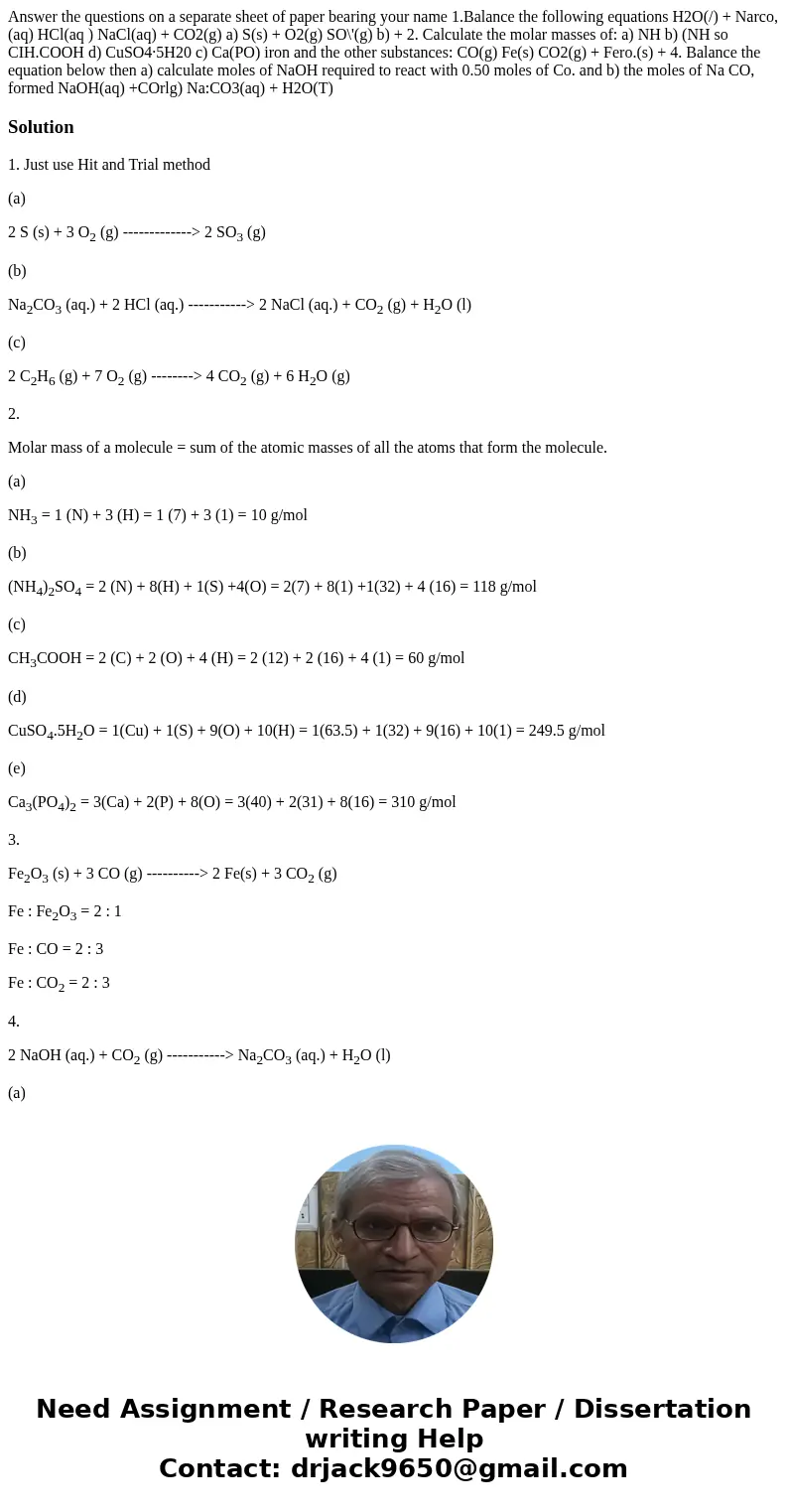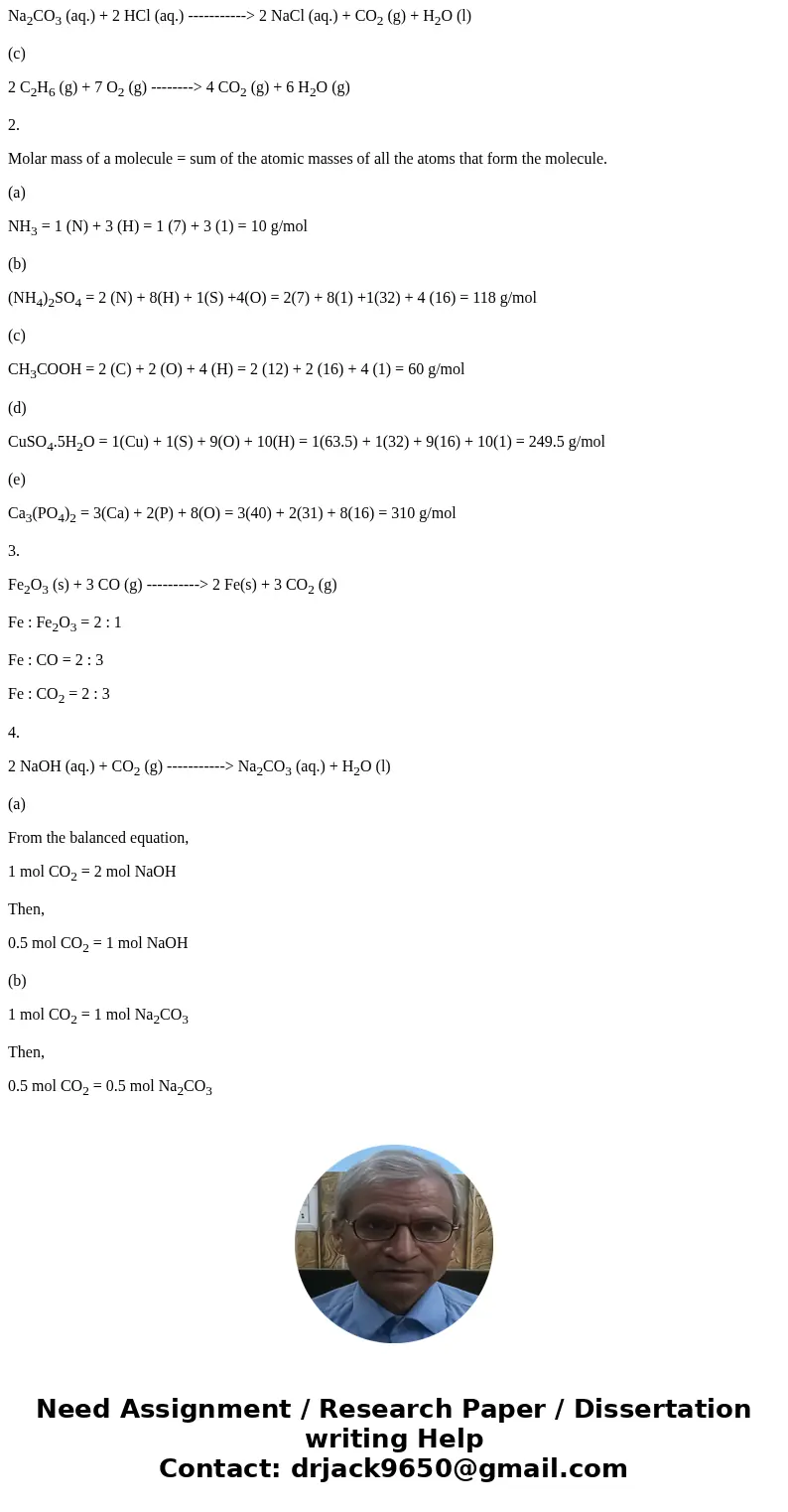Answer the questions on a separate sheet of paper bearing yo
Solution
1. Just use Hit and Trial method
(a)
2 S (s) + 3 O2 (g) -------------> 2 SO3 (g)
(b)
Na2CO3 (aq.) + 2 HCl (aq.) -----------> 2 NaCl (aq.) + CO2 (g) + H2O (l)
(c)
2 C2H6 (g) + 7 O2 (g) --------> 4 CO2 (g) + 6 H2O (g)
2.
Molar mass of a molecule = sum of the atomic masses of all the atoms that form the molecule.
(a)
NH3 = 1 (N) + 3 (H) = 1 (7) + 3 (1) = 10 g/mol
(b)
(NH4)2SO4 = 2 (N) + 8(H) + 1(S) +4(O) = 2(7) + 8(1) +1(32) + 4 (16) = 118 g/mol
(c)
CH3COOH = 2 (C) + 2 (O) + 4 (H) = 2 (12) + 2 (16) + 4 (1) = 60 g/mol
(d)
CuSO4.5H2O = 1(Cu) + 1(S) + 9(O) + 10(H) = 1(63.5) + 1(32) + 9(16) + 10(1) = 249.5 g/mol
(e)
Ca3(PO4)2 = 3(Ca) + 2(P) + 8(O) = 3(40) + 2(31) + 8(16) = 310 g/mol
3.
Fe2O3 (s) + 3 CO (g) ----------> 2 Fe(s) + 3 CO2 (g)
Fe : Fe2O3 = 2 : 1
Fe : CO = 2 : 3
Fe : CO2 = 2 : 3
4.
2 NaOH (aq.) + CO2 (g) -----------> Na2CO3 (aq.) + H2O (l)
(a)
From the balanced equation,
1 mol CO2 = 2 mol NaOH
Then,
0.5 mol CO2 = 1 mol NaOH
(b)
1 mol CO2 = 1 mol Na2CO3
Then,
0.5 mol CO2 = 0.5 mol Na2CO3


 Homework Sourse
Homework Sourse